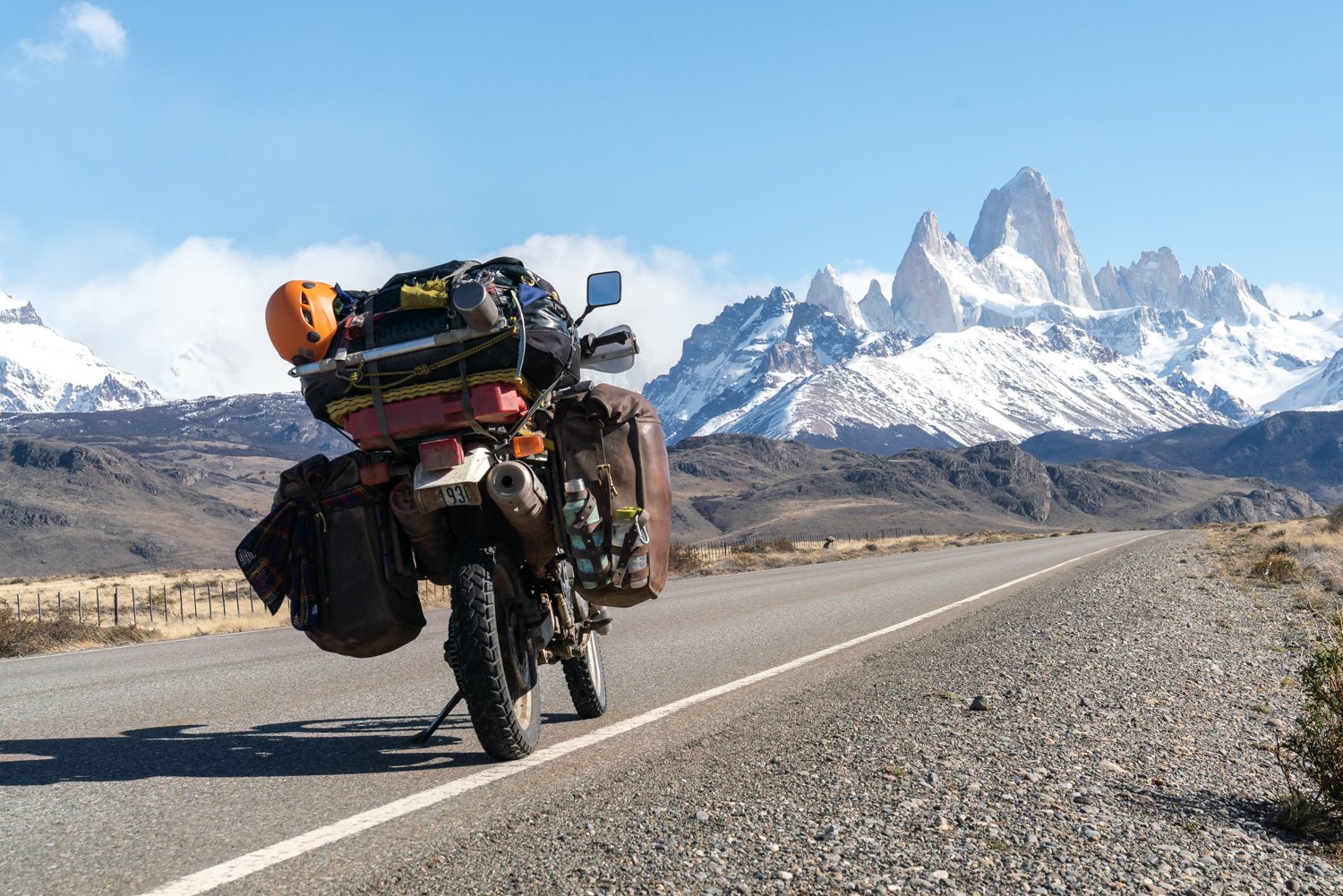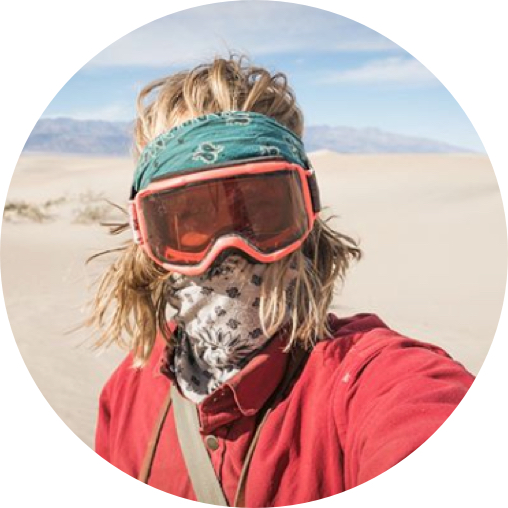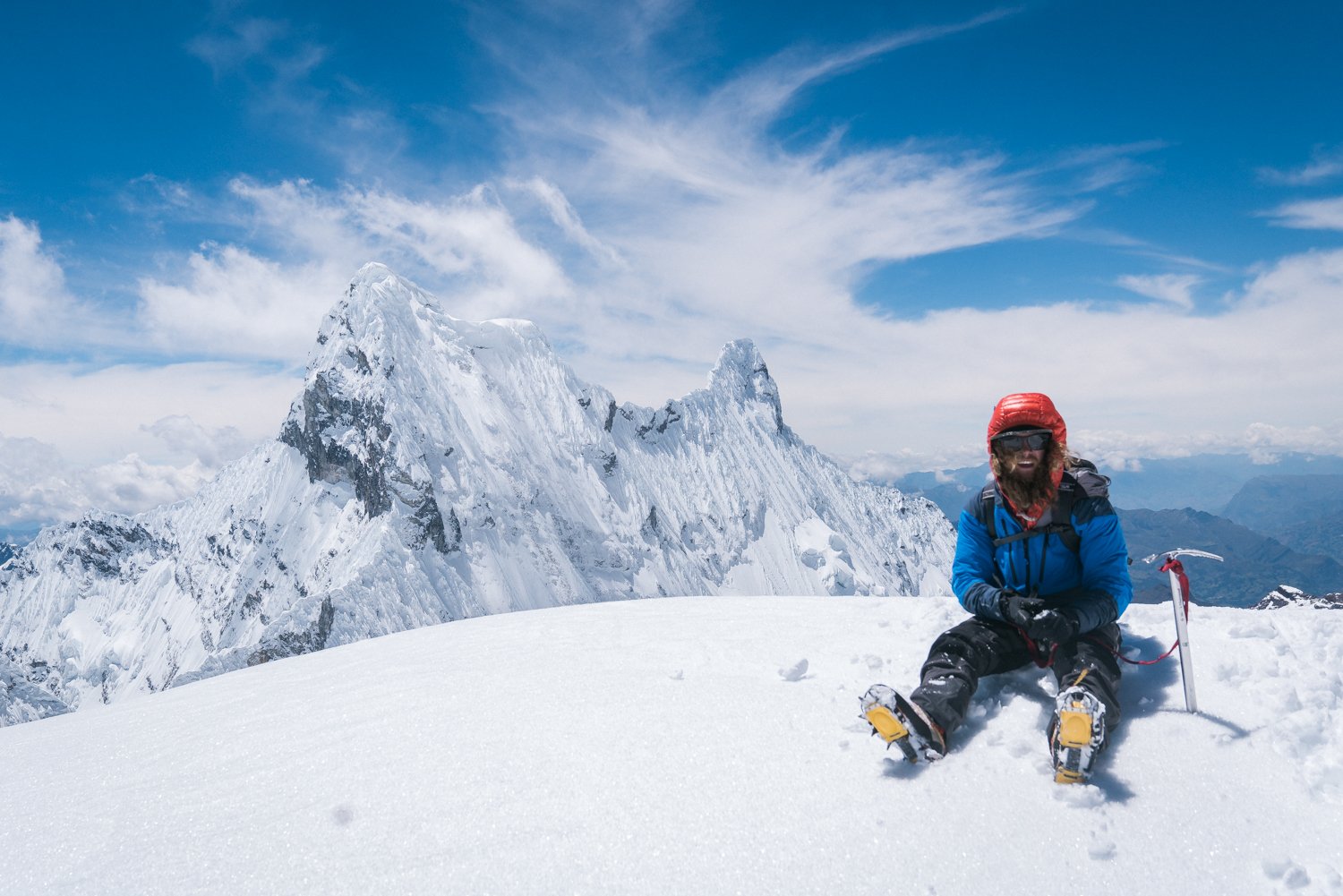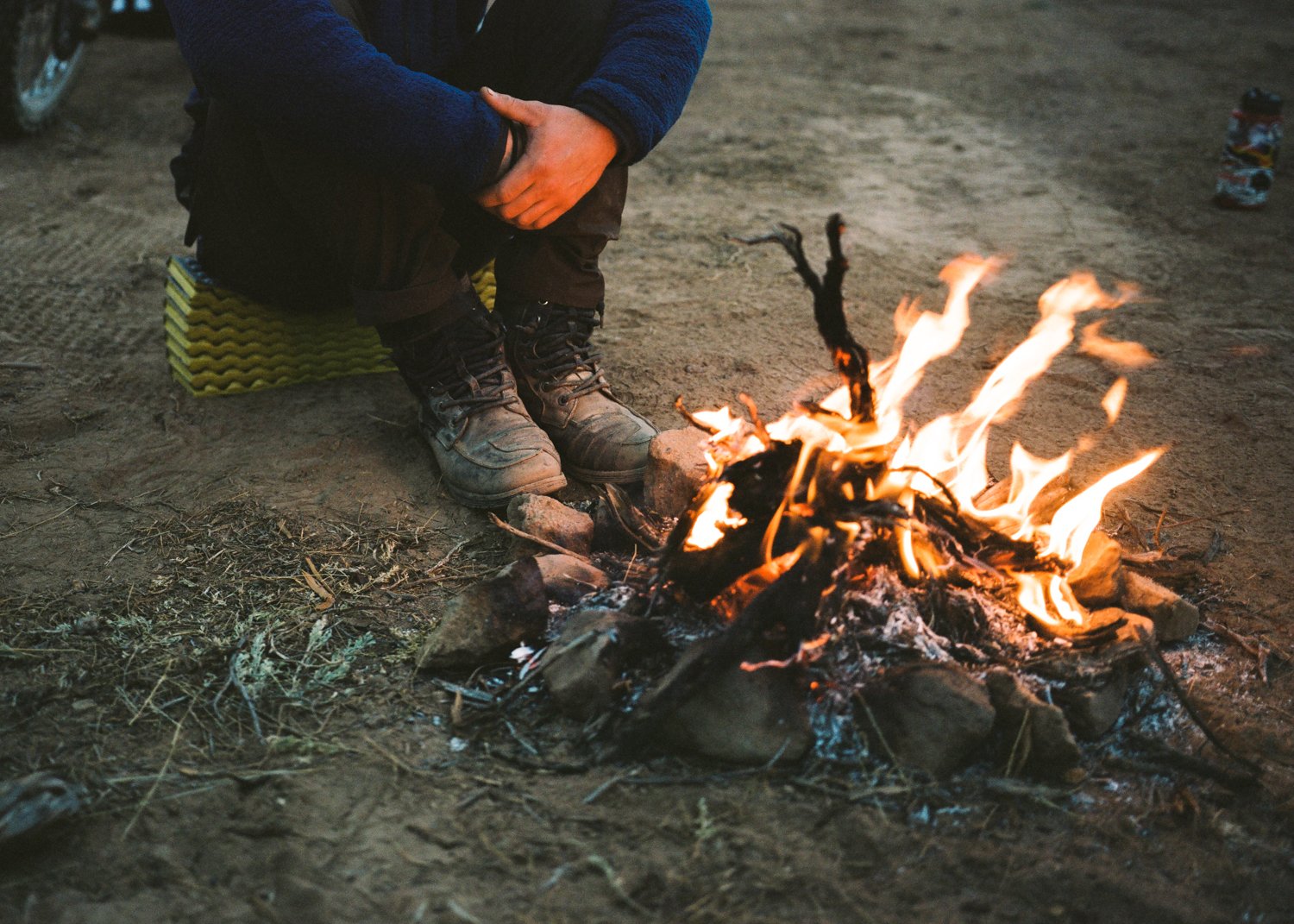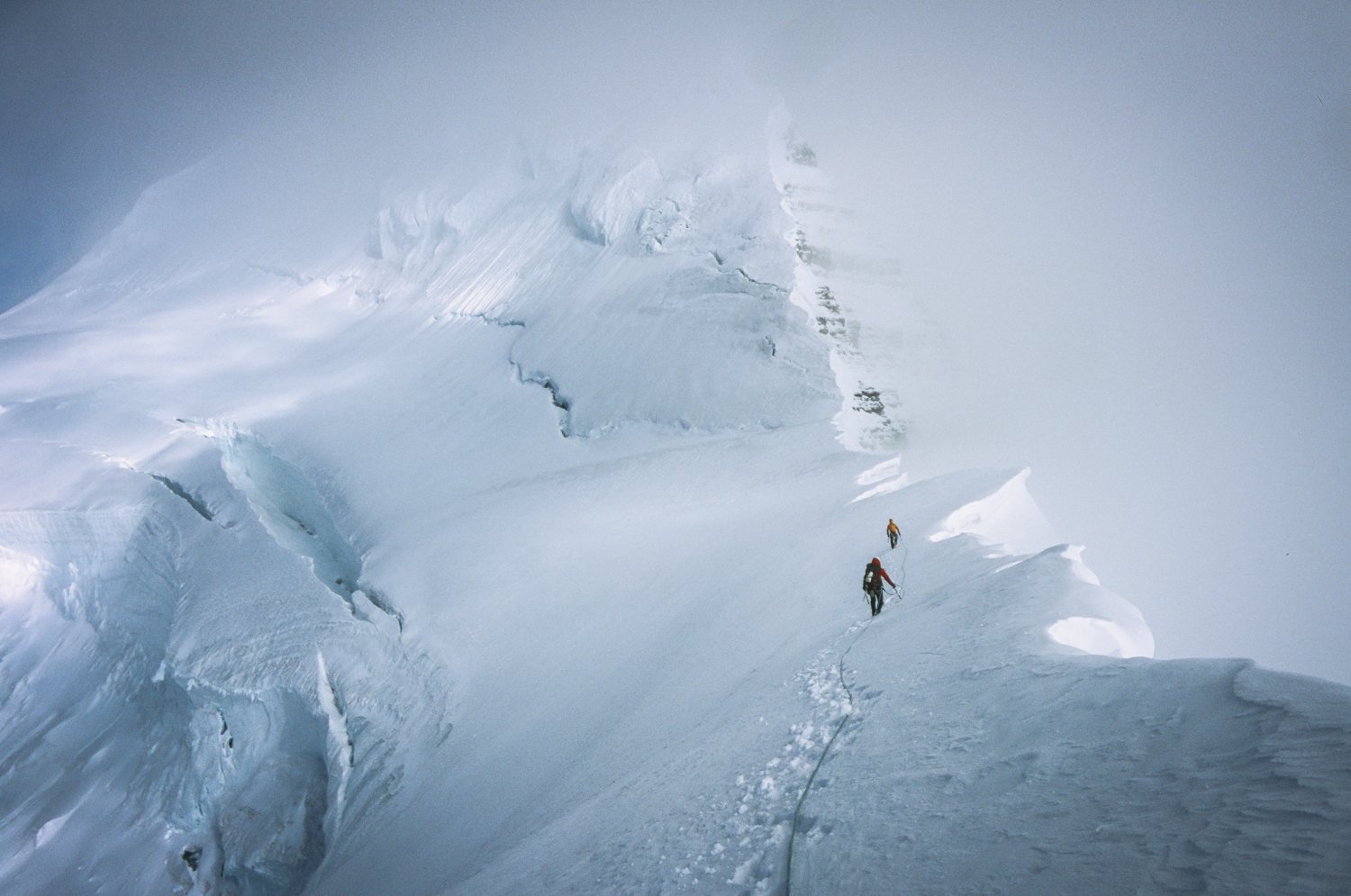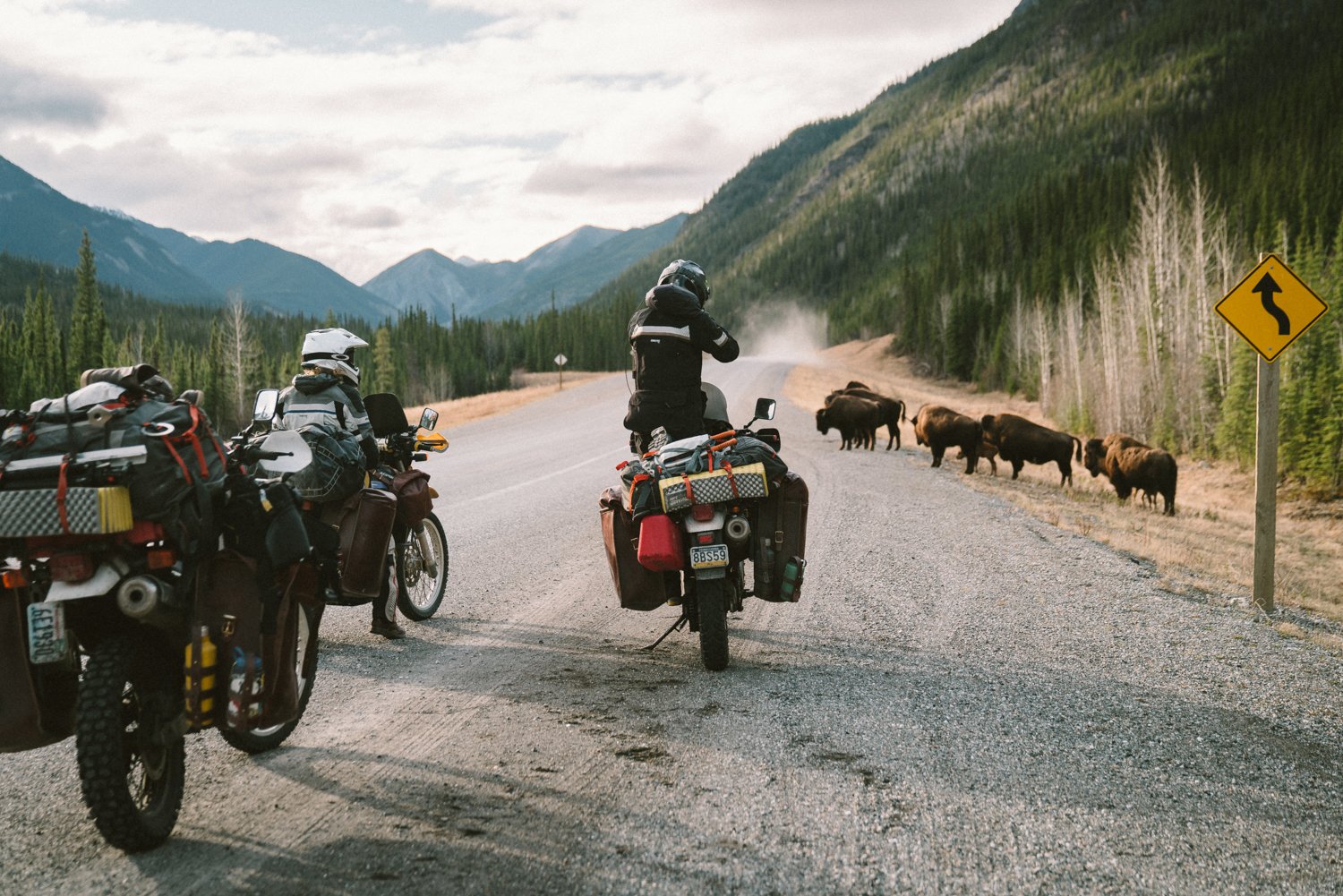The Final Chapter
The last leg of the Pan American Trail was surreal. I had mixed emotions about the end, but I was ready to finish and head back to the comfort of the states.
For those of you just tuning in, it had been nearly a year and a half since my buddies and I set sail on the Pan American Trail, a motorcycle and climbing expedition from Deadhorse, Alaska to Ushuaia, Argentina. Our goal was to not only ride from the tip of North America to the very bottom of South America but to climb as many mountains as we could along the way.
After so many months on the road, it felt perfectly normal to spend our entire days on a motorcycle seat and our nights beside them. Money was dwindling, the weather was miserable, and although Allen had managed to kick the Lyme disease and join back with us in Peru, his health and strength were suffering significantly as a result. Our last climbing expedition, a fairly ambitious nine-day attempt of Alpamayo, Quitaraju, and Artesonraju had proven unsuccessful due to poor weather and was incredibly demanding both physically and mentally. At Alpamayo high camp, we witnessed consistent avalanches down our route and decided that it wasn’t worth the gamble. Since the beginning of the trip, Alpamayo was a big personal goal of mine and making the decision to turn back was not an easy one to make— especially in light of coming so close to success. After getting trapped at 18,000 feet for several days in whiteout conditions, our other objectives proved too unstable to attempt.
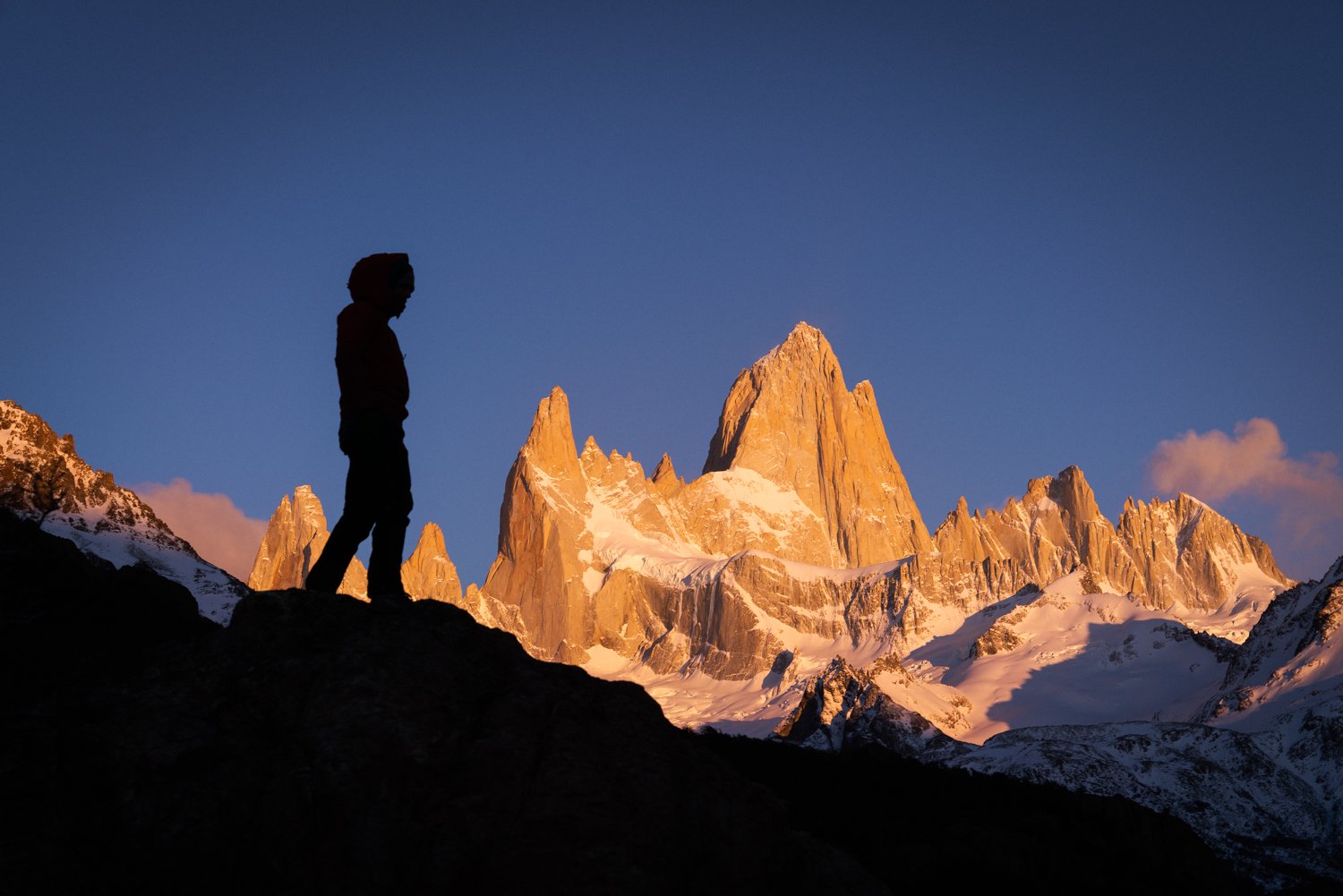
Allen, the most athletic and fit team member by far, struggled to climb within the safety margins that we felt comfortable with. We decided to give up our climbing goals and objectives for the rest of the trip, and focus on the incredible riding throughout the rest of South America. Although it was disappointing at first, it turned out to be a major relief, as there was no pressure to constantly mentally gear up for another expedition while recovering from a previous mission. High-alpine climbing is not an easy thing, and back-to-back climbs across two continents over the course of a year proved to be the toughest thing I’ve ever done.
Ups and Downs
As we left the highlands of Peru, we found ourselves dropping down high-elevation passes into dense and sweltering jungles, only to climb up and over another 14,000 ft pass. The landscape was absolutely breathtaking. At high altitude, we’d stop and pile on every layer of clothing that we could fit under our riding jackets, and before long we were stopping to shed every last possible garment clinging to our sticky bodies. Since the beginning of the trip, I’d been eager to check the iconic Bolivian salt flats off my bucket list— the Salar de Uyuni. As the dirt turned to salt and the salt to an endless sea of white, it felt like I was in a dream. The hundreds of miles of flooded salt flats looked, unlike anything I had ever seen or witnessed.
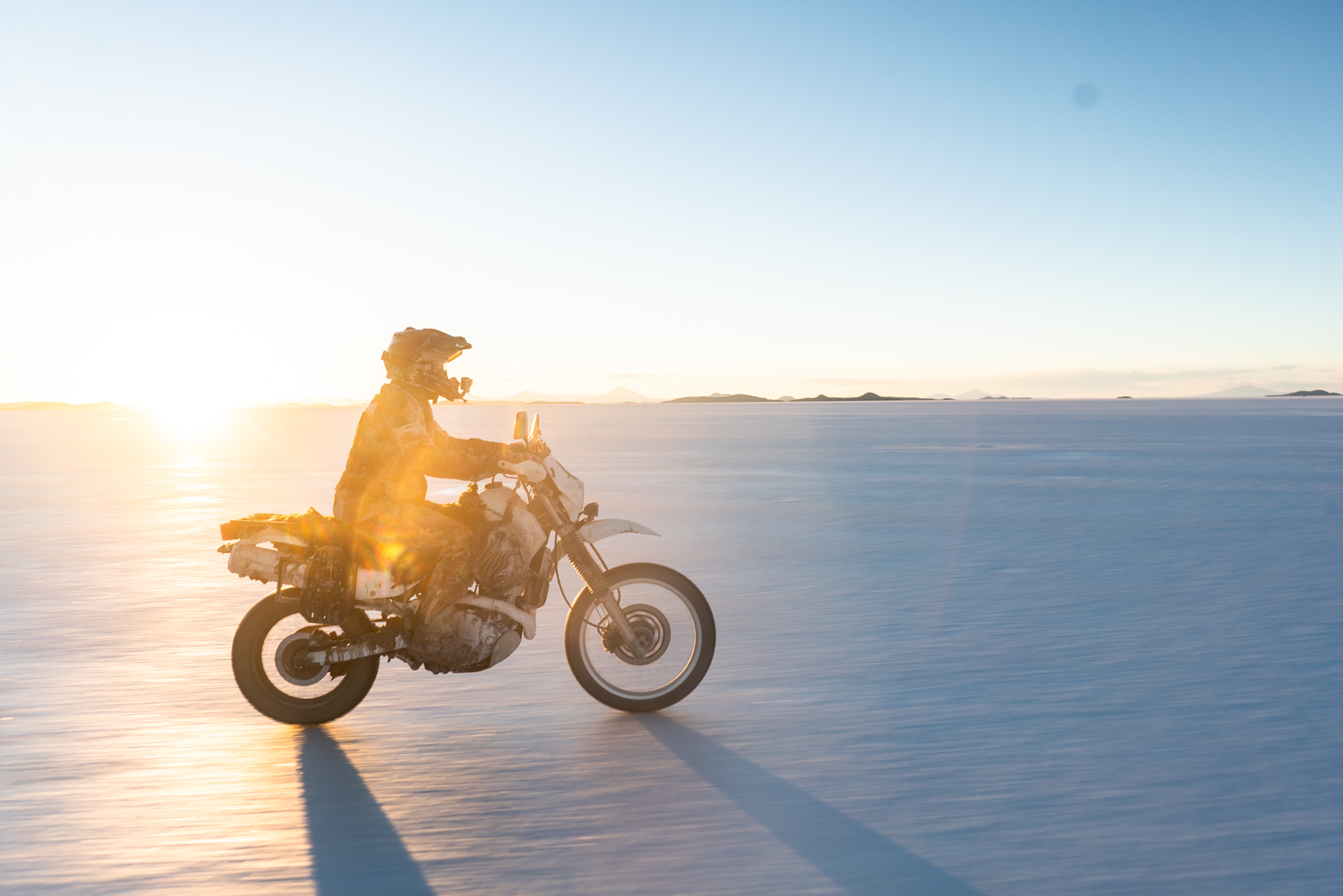
The earth and sky blended together as one, the horizon lost in the distance. In every direction, there was only more of the same: an endless expanse of white. Riding side by side, Allen hooted over the comm system and I hollered back. It was an otherworldly experience, ripping full throttle for hours on end through several inches of water, and it felt like we were on another planet. With nothing to reference our speed, if it wasn’t for the speedometers I might have forgotten we were even moving. I prayed that our electronics wouldn’t fry and tried to focus ahead of me as the salt spray stung my eyes. Where night caught us, we stopped and set up camp. The milky was so bright that it cast a faint shadow, and shooting stars danced across the sky every few minutes.
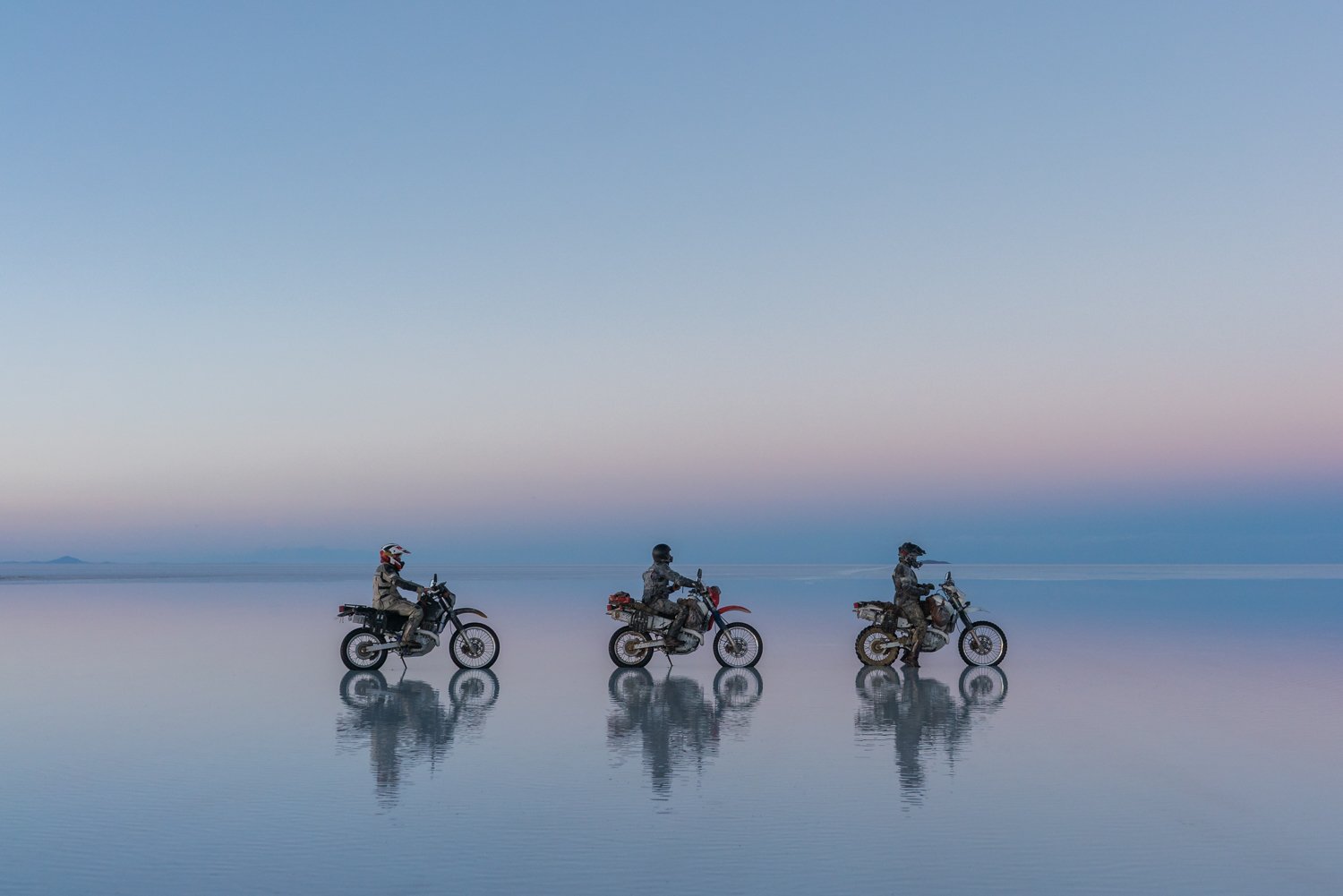
A long-distance motorcycle trip isn’t a vacation, in fact, it’s quite the opposite. There are times where you can’t feel your hands for hours, times where things couldn’t get worse, and times where you’d sell your birthright for a warm bowl of stew. However, speeding across the flooded salt flats was one of the moments when I was reminded that this crazy idea to ride from Alaska to Patagonia was worth it after all.
Shortly before crossing the Chilean border, I took a bad line and hit deep mud at full throttle. Before I knew it, I highsided and epically ragdolled at 60mph. After examining life and limb, I was surprised that neither was lost nor broken, albeit my arm was nearly useless for the next few days. Normally, a wreck of these proportions would garner a good laugh between us all, but injuries on a 15,000 ft Bolivian “road” were no joke— far from anyone or anything. The boys helped collect my scattered things and get me back on the bike. The temperature was well below freezing, hundreds of miles lay in between us and our destination, and my body felt like it had gone through a wood chipper. I had no choice but to get back on my bike, push through the pain, ride one handed and make up for lost time before night caught us.
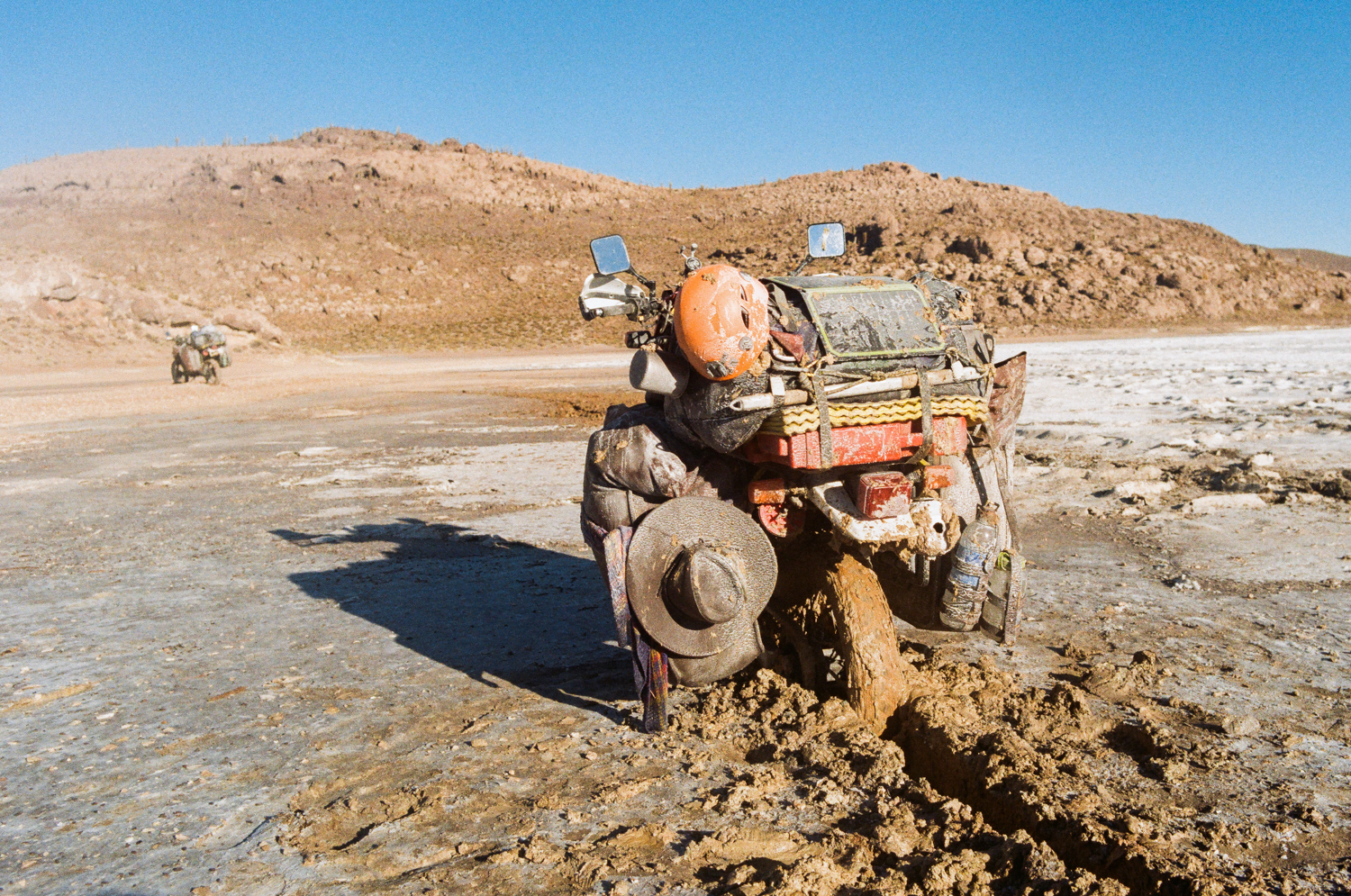
Allen hit ice not long after and went down as well. I wanted to take a picture but couldn’t feel my hands and could barely grip the throttle, much less open my saddle bag and use my camera. We hit the Chilean border, and in an hour dropped 7000 feet into the warm, desert town of San Pedro; full of tourists and margaritas. The poverty and remoteness of the Bolivian highlands instantly gave way to a bustling city and the strong economy of Chile. It felt like we had time warped a hundred years into the future.
“South America is the weirdest,” Allen said. I grunted in response as I struggled to peel the bundles of layers clinging to my skin.
Patagonia Bound
The infamous Atacama desert of Chile did not disappoint and neither did the shrimp empanadas along the coast. After days of bland rice dishes, they were too good to be true. As usual, around every corner we ran into incredibly hospitable and helpful friends, who gave us places to stay, mechanical assistance, home cooked meals, and even free tires. Passing by so many incredible places so quickly is a downright shame, as several lifetimes could be spent exploring in each and every country that we passed through.
Crossing into Argentina and into Patagonia for the first time, I remember smelling the familiar scent of woodsmoke and pine, and had to remind myself that I was actually 20,000 miles away from the mossy forests of the Pacific Northwest. Patagonia was the end of the road— the last leg of our Pan American Trail, and it would prove to be nothing short of all-out war.
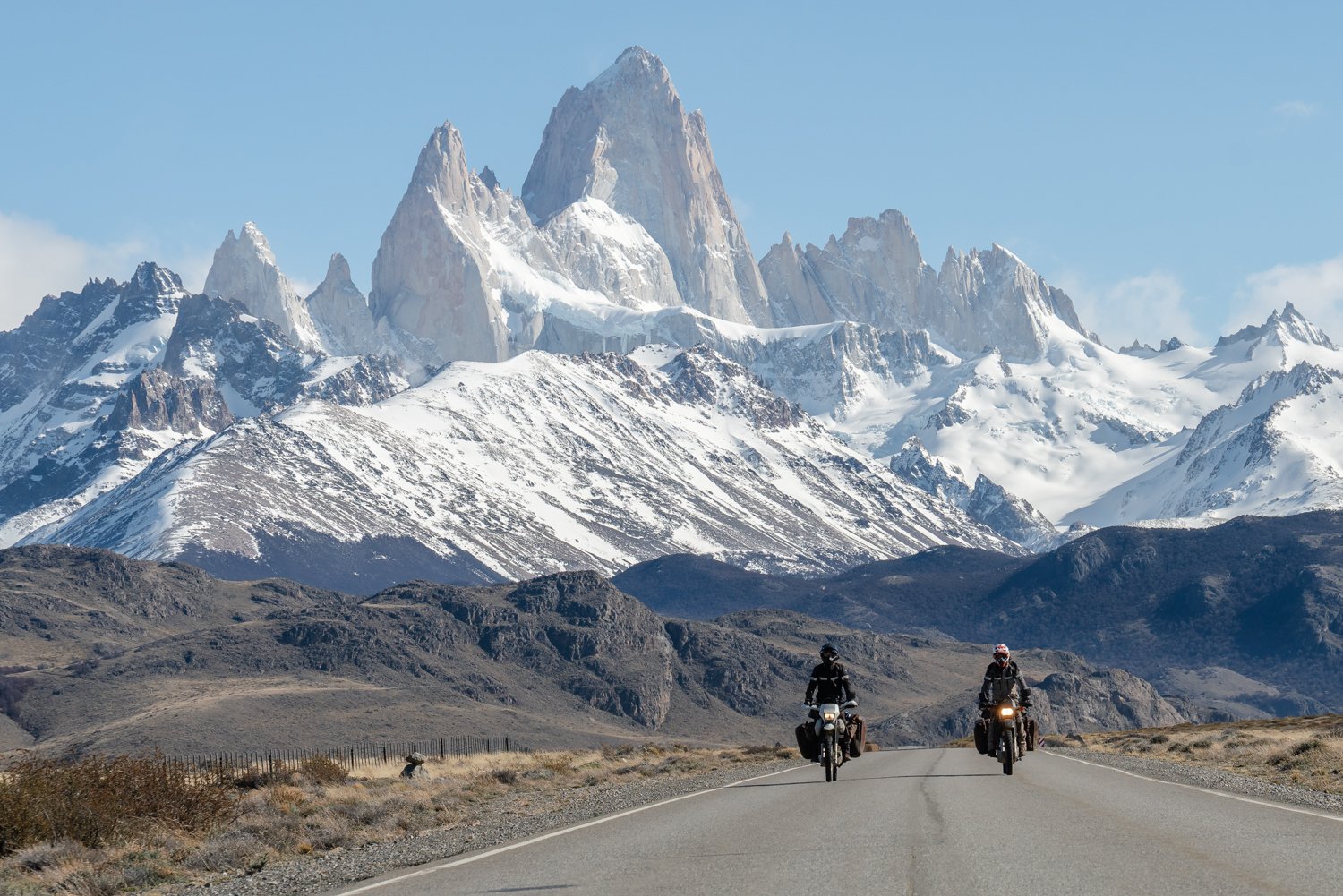
The closer we drew to the finish line, the colder the air became and the more our bikes threatened to give up the ghost. Numb fingers and toes became the daily routine once again, and hurricane-force wind gusts threatened to force us off the road or into oncoming semi trucks.
We had heard stories about the fierce winds of Patagonia, and after experiencing them firsthand I wouldn’t wish them on my worst enemy. After a days’ ride of fighting wind and cold, we’d hobble off our bikes and feel like old men with stage 4 arthritis. Nearly every other day, we’d lose a few hours due to bike problems— flat tires, fried ignition components, dead batteries, the list goes on. Our bikes were tired, and who could blame them? Ushuaia, the southernmost city in South America and the end of the road in the Western Hemisphere, slowly drew closer and with it our hopes for finishing all together, as a team.
Beginning of The End
Rolling into the first town in Patagonia, Allen’s bike had been acting weird. As we were attempting to find an AirBnB for the night, the bike let out a noisy “ping” and “clunk”, and shut off. After a compression test revealed that the engine was probably blown, we came to terms with the fact that Allen would pawn his blown bike to anybody who would take it, and bus down to Ushuaia to meet Jeremy and I. However, we decided to rip into the motor just for the hell of it, and ended up rebuilding the motor’s top end by the side of a road thanks to the help of a local mechanic. Allen’s degree in mechanical engineering and experience with motors proved to be a valuable asset throughout the trip. His ability to approach a problem and fix it before Jeremy and I could even finish scratching our heads pulled us through more than a few challenging bike issues.
The issue ended up being a piece of the carb that had broken off and gotten stuck in the engine, and after the rebuild, we only made it 30 miles before another piece broke off and rattled around inside the engine. Once again, we said our goodbyes to Allen, certain that his bike was blown for good this time. He hitchhiked back to town, rebuilt the motor in 3 days flat, and caught up with Jeremy and me about a week later.
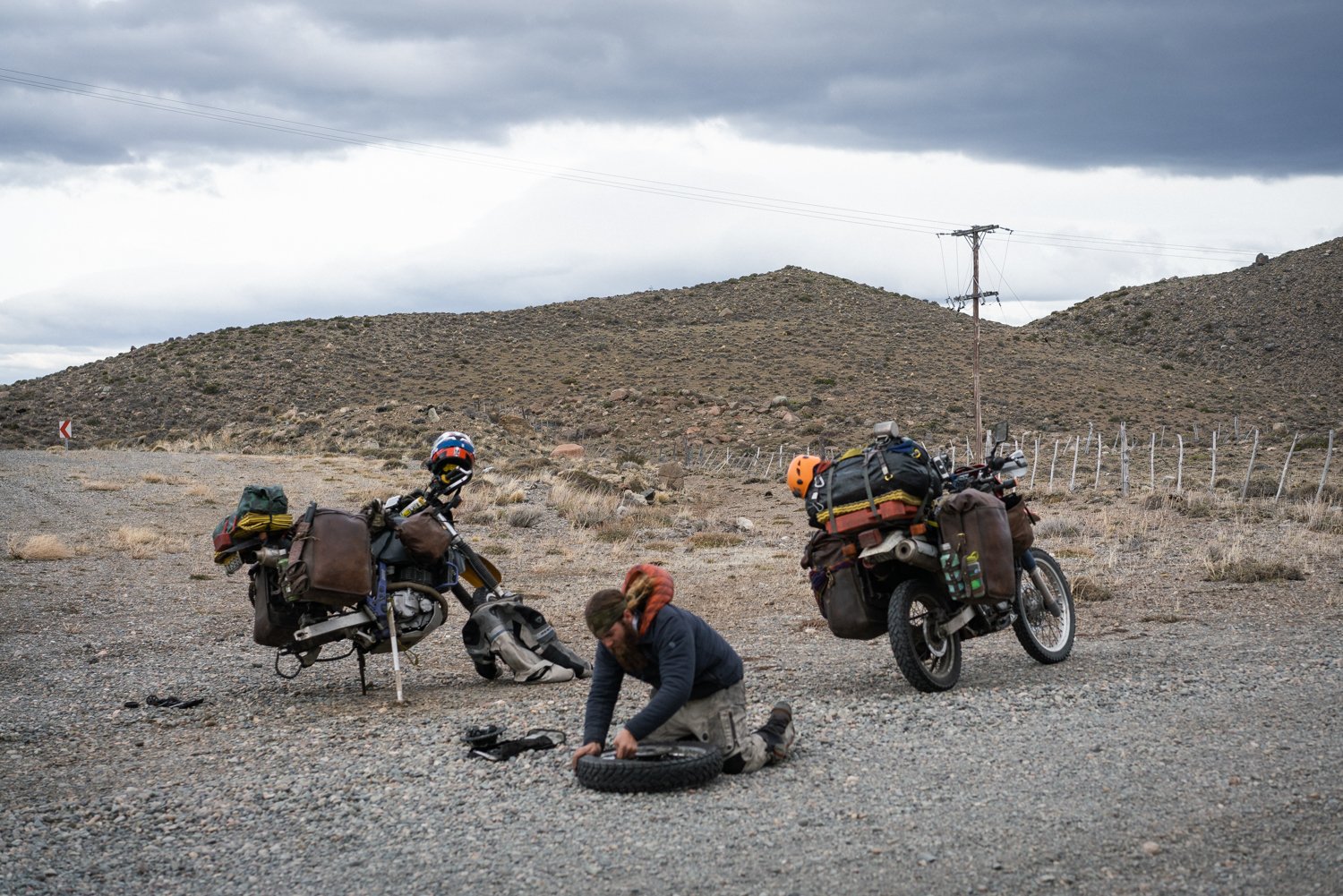
However, our troubles were far from over. Jeremy’s bike got a flat, and repairs in 60 mph winds proved a rather unpleasant experience. The next day his bike suffered electrical failures, forcing us to take cover in town for a few days. Allen’s engine developed an excruciating motor knock, threatening to implode at any moment while also burning a quart of oil every 100 miles. Jeremy was plagued with further electric issues, and one day I towed his dead bike 45 miles in a strong headwind. Every night, the cold would kill Jeremy’s and my bike batteries, and in the morning Allen would have to jumpstart our bikes despite his motor sounding like a bunch of clattering pots and pans. We ran out of gas and spent half a day hitchhiking to and from a station. Allen wheeled his bike into our AirBnB one night and ripped into the motor a third time in an effort to track down the motor knock.
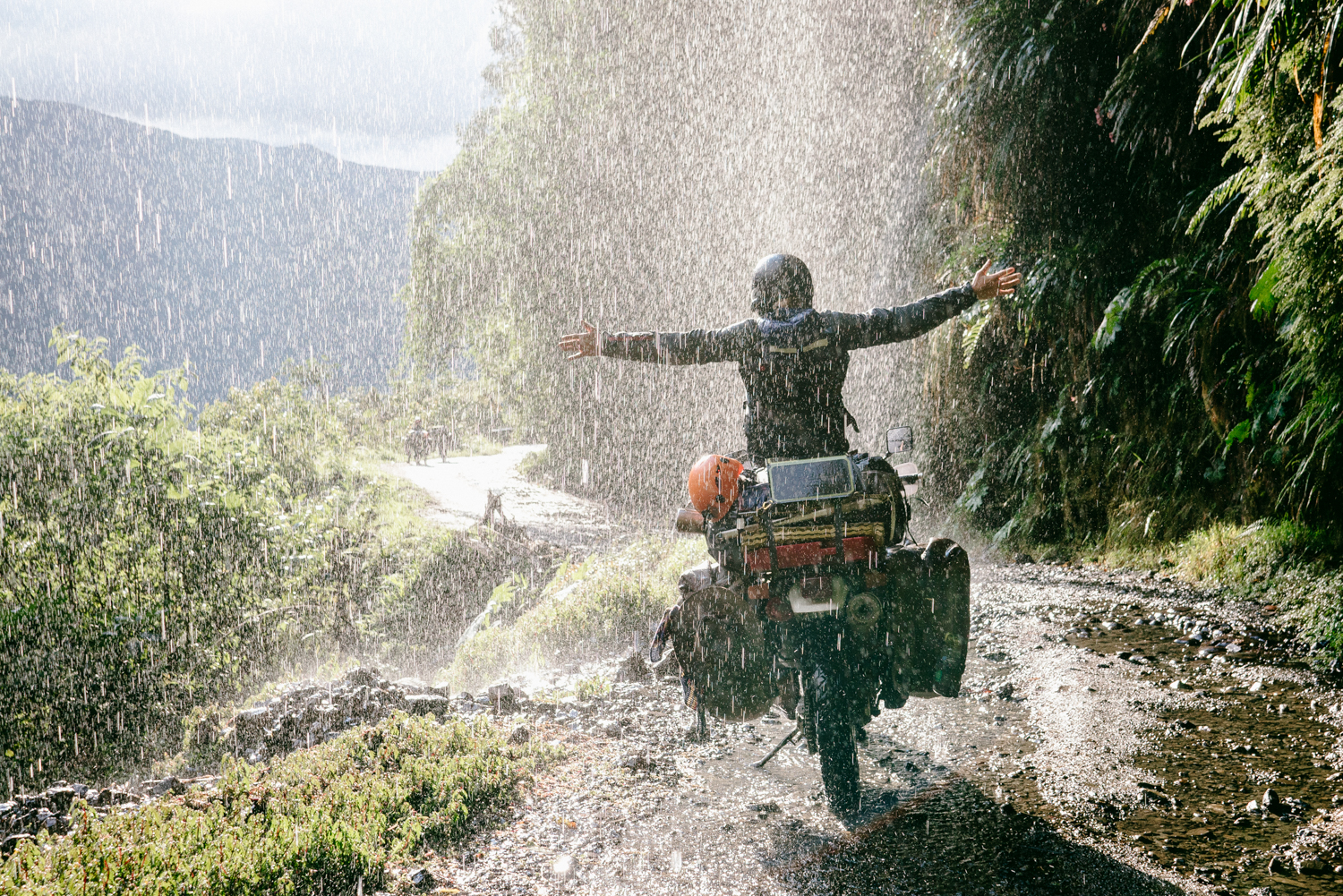
Despite our worries and woes, Patagonia was beautiful (when it wasn’t nuking rain or wind).
Guanacos, a cousin of the llama, roamed to and fro in herds by the hundreds. Rheas, flightless birds that look almost identical to an ostrich, darted across the Patagonian plains, one nearly T-boning Jeremy. In the town of El Chalten, we caught a lucky weather window and were fortunate enough to behold Fitz Roy in all its glory, a bucket list experience for us all. We witnessed enormous glaciers calving and rode through endless landscapes so dramatic they’d make a grown man cry.
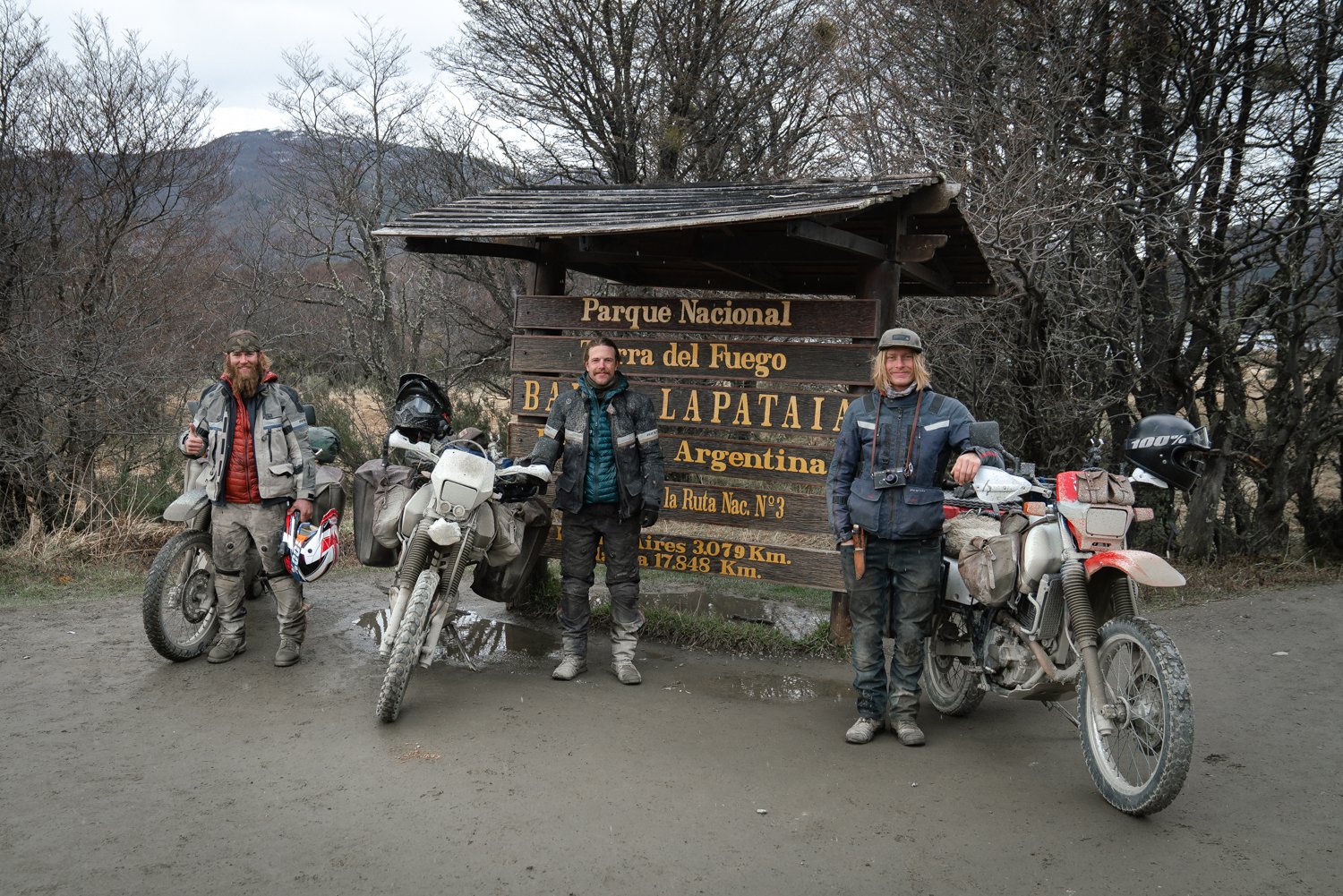
On September 17th, in the year of our Lord 2018, we reached the southern terminus of the Pan American Highway, the end of the road in South America. The end of the trip wasn’t incredibly climactic or life-changing; I didn’t have a great epiphany, and I didn’t expect to. I didn’t spend 17 months and ride 38,000 miles to cross a finish line, but to experience, appreciate, and learn from the journey. The Pan American Trail was the completion of a lifelong goal. And after all, there’s no time like the present to follow your dreams.
